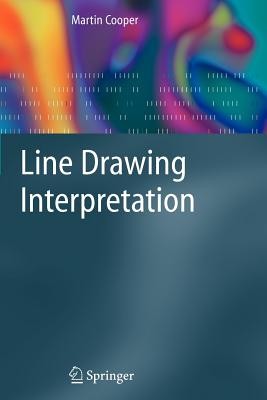
- We will send in 10–14 business days.
- Author: Martin Cooper
- Publisher: Springer
- ISBN-10: 1849967601
- ISBN-13: 9781849967600
- Format: 15.6 x 23.4 x 1.4 cm, softcover
- Language: English
- SAVE -10% with code: EXTRA
Reviews
Description
The computer interpretation of line drawings is a classic problem in arti?cial intelligence (AI) which has inspired the development of some fundamental AI tools, including constraint propagation, probabilistic relaxation, the characte- zation of tractable constraint classes and, most recently, the propagationof soft constraintsin?nite-domainoptimizationproblems. Line drawinginterpretation has many distinct applications on the borderline of computer vision and c- puter graphics, including sketch interpretation, the input of 3D object models 1 and the creation of 2 D illustrations in electronic documents. 2 I hope I have made this fascinating topic accessible not only to computer scientistsbutalsotomathematicians, psychologistsandcognitivescientistsand, indeed, to anyone who is intrigued by optical illusions and impossible or - biguous ?gures. This book could not have been written without the support of the CNRS, theFrenchCentreNational deRecherche Scienti?que, who?nancedmyone-year break from teaching at the University of Toulouse III. The UK Engineering and Physical Sciences Research Council also ?nanced several extended visits to the Oxford University Computing Laboratory. Section 9.1 is just a brief summary of the results on tractable constraints that have come out of this very productive joint research programme with David Cohen, Peter Jeavons and Andrei Krokhin. The various soft arc consistency techniques described in Chapter 8 were developed in collaboration with Thomas Schiex and Simon de Givry at INRA, Toulouse. I am also grateful to Ralph Martin and Peter Varley for their comments on the line-labelling constraints presented in Chapter 3.
EXTRA 10 % discount with code: EXTRA
The promotion ends in 21d.00:40:54
The discount code is valid when purchasing from 10 €. Discounts do not stack.
- Author: Martin Cooper
- Publisher: Springer
- ISBN-10: 1849967601
- ISBN-13: 9781849967600
- Format: 15.6 x 23.4 x 1.4 cm, softcover
- Language: English English
The computer interpretation of line drawings is a classic problem in arti?cial intelligence (AI) which has inspired the development of some fundamental AI tools, including constraint propagation, probabilistic relaxation, the characte- zation of tractable constraint classes and, most recently, the propagationof soft constraintsin?nite-domainoptimizationproblems. Line drawinginterpretation has many distinct applications on the borderline of computer vision and c- puter graphics, including sketch interpretation, the input of 3D object models 1 and the creation of 2 D illustrations in electronic documents. 2 I hope I have made this fascinating topic accessible not only to computer scientistsbutalsotomathematicians, psychologistsandcognitivescientistsand, indeed, to anyone who is intrigued by optical illusions and impossible or - biguous ?gures. This book could not have been written without the support of the CNRS, theFrenchCentreNational deRecherche Scienti?que, who?nancedmyone-year break from teaching at the University of Toulouse III. The UK Engineering and Physical Sciences Research Council also ?nanced several extended visits to the Oxford University Computing Laboratory. Section 9.1 is just a brief summary of the results on tractable constraints that have come out of this very productive joint research programme with David Cohen, Peter Jeavons and Andrei Krokhin. The various soft arc consistency techniques described in Chapter 8 were developed in collaboration with Thomas Schiex and Simon de Givry at INRA, Toulouse. I am also grateful to Ralph Martin and Peter Varley for their comments on the line-labelling constraints presented in Chapter 3.


Reviews